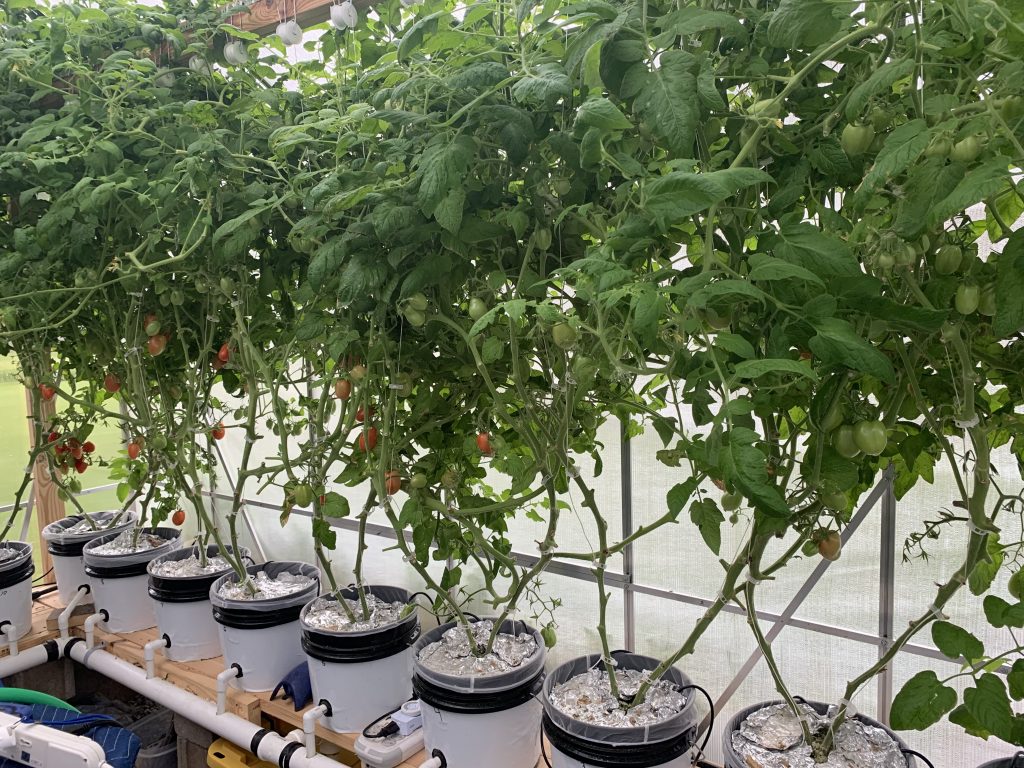Dutch Bucket System

In the Dutch Bucket System, plants are grown in individual buckets or containers, each filled with an inert growing medium like perlite or coconut coir. Here’s how the Dutch Bucket System works:
- Setup: Each bucket is equipped with a drainage pipe or tube at the bottom and a drip line or irrigation line at the top. The buckets are typically arranged in rows, and the drainage pipes are connected to a common drain line or reservoir.
- Nutrient Delivery: A nutrient solution is prepared in a central reservoir, which is then delivered to each bucket through the drip lines or irrigation lines. The nutrient solution flows through the growing medium and around the plant roots, delivering water and nutrients directly to the root zone.
- Drainage: Excess nutrient solution not taken up by the plants drains out through the drainage pipes and returns to the common drain line or reservoir. This allows for efficient recirculation of the nutrient solution, reducing waste and optimizing nutrient uptake by the plants.
- Automation and Monitoring: The Dutch Bucket System can be automated with timers, pumps, and sensors to regulate the delivery of nutrient solution, maintaining proper moisture levels and nutrient concentrations. pH and nutrient levels should be regularly monitored and adjusted to ensure optimal plant growth.
The Dutch Bucket System offers several advantages. It provides individualized control over each plant, allowing for precise nutrient delivery and tailored growing conditions. The buckets provide good support for larger plants and their root systems. The system is versatile and can be used in various greenhouse setups, both small-scale and large-scale.
One important aspect of the Dutch Bucket System is that it requires regular monitoring and maintenance. Checking the nutrient solution, pH levels, and ensuring proper drainage is essential for plant health and optimal growth. Additionally, since the system relies on recirculating the nutrient solution, attention must be given to preventing the buildup of pathogens or imbalances in the solution.
Overall, the Dutch Bucket System is a widely used hydroponic method that allows for efficient cultivation of larger plants, making it popular to both the hobby grower and in commercial greenhouse settings.